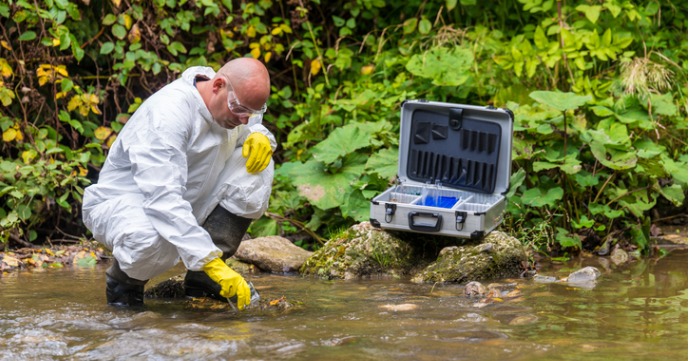
During the early stages of the COVID-19 pandemic, one of the few tools available for detecting COVID in the community was wastewater surveillance. Sampling wastewater for COVID-19 proved to be an effective early warning system. The information helped authorities decide on the course of action required to contain the spread.
COVID in Wastewater
Viral fragments from people with COVID enter the sewerage network through drains and toilets because people shed the virus in their faeces when showering and washing their hands within 2-3 days of being infected, whether they have symptoms or not. The untreated sewage can be tested for fragments of SARS-CoV-2 when it arrives at wastewater treatment plants. COVID-19 in wastewater could be detected sooner than nasal testing.
Wastewater from quarantine hotels in the CBDs was known to contain COVID-19 fragments, so the wastewater treatment plants that serviced the cities have been used as test sites. Additional wastewater treatment plants have been sampled to check if there were undetected cases of COVID-19 in the community.
How Sampling Wastewater for COVID Works
When the virus enters the sewerage system through toilets, showers, and drains, it disintegrates but leaves behind fragments of its genetic signature known as SARS-CoV-2 ribonucleic acid (RNA). During sampling, the unique signature of the virus is captured as nano-scale fragments. After filtering the fragments from untreated wastewater, these are amplified so the lab technician can confirm the genetic sequence of the virus.
Accuracy of Wastewater Test Results
With COVID-19 wastewater sampling in place all over the world, it became clear that the results were an accurate representation of infections in the community.
A US study determined wastewater surveillance can detect one COVID infection for at least every 100 people, and at best, it could detect one infection per two million people.
The results of sampling at two Brisbane wastewater treatment plants early in 2020 aligned with the number of infected people identified through clinical testing.
Transmission of Viruses in Wastewater
Sewage is nasty. Apart from the obvious odour, sewage contains bacteria, viruses, and protozoa. Contact with sewage can cause gastroenteritis, hepatitis, giardiasis and cryptosporidiosis, and eye and skin infections. Therefore, personal protective equipment, including gloves, boots, and eye protection, is essential whenever a worker gets exposed to sewage.
However, workers who come into contact with sewage aren’t at risk of acquiring a COVID-19 virus infection. The SARS-CoV-2 fragments in sewage are inactivated by detergents in sewage, usually before it reaches the treatment plant. Moreover, wastewater is treated with chlorine and UV disinfection to make it safe for discharge into the environment or recycling.
The health industry has known the dangers of bacteria and virus transmission in wastewater for decades. As mentioned, contact with sewage/wastewater can result in several diseases. But what wasn’t as well known was the dangers posed by aerosolized sewage particles in drains generated by the force of a toilet flush.
Airborne Transmission Via Drains
The COVID-19 pandemic highlighted how easily virus particles can be transmitted from person to person, even when they aren’t in the same room. There was overseas evidence of coronavirus particles in the bathroom of a long, unoccupied apartment. It was determined that aerosolized particles entered the apartment through the drain pipes. There were also cases of people overseas who got infected with the virus without leaving their apartments from other people in the building via the drainage system.
Trap Seal for Floor Drains
If the apartments of non-infected residents had had a floor drain trap seal such as Green Drain™ installed, the chances of COVID-19 particles entering their apartment would be significantly reduced. The waterless trap seal prevents pathogens, noxious fumes, and pests from coming up through the drain. The trap seal opens when water hits the drain and then closes off the drain when the flow of water stops.
The clinical version of Green Drain™ is used in hospitals to reduce patients’ exposure to hazardous sewer gases and disease-causing pathogens that remain in drain lines and plumbing. Hospitals worldwide are concerned about potentially deadly diseases spreading between patients’ rooms linked only by drain lines and plumbing systems.
For more information on Green Drain™ and how you can further detect COVID-19 in wastewater, get in touch with Helix Solutions at 1300 29 32 32 or contact us online.